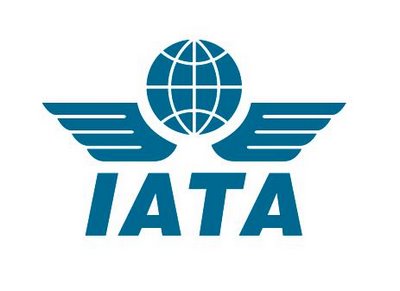IATA: Air Cargo Up 7.7% in August Versus Pre-COVID Levels; Governments Response to Delta Variant Slams August Domestic Traffic Demand

The International Air Transport Association (IATA) released August 2021 data for global air cargo markets showing that demand continued its strong growth trend but pressure on capacity is rising.
As comparisons between 2021 and 2020 monthly results are distorted by the extraordinary impact of COVID-19, unless otherwise noted, all comparisons below are to August 2019 which followed a normal demand pattern.
- Global demand, measured in cargo tonne-kilometers (CTKs*), was up 7.7% compared to August 2019 (8.6% for international operations). Overall growth remains strong compared to the long-term average growth trend of around 4.7%.
- The pace of growth slowed slightly compared to July, which saw demand increase 8.8% (against pre-COVID-19 levels).
- Cargo capacity recovery paused in August, down 12.2% compared to August 2019 (‑13.2% for international operations). In month-on-month terms, capacity fell by 1.6% – the largest drop since January 2021.
Economic conditions continue to support air cargo growth but are slightly weaker than in the previous months indicating that global manufacturing growth has peaked:
- The August manufacturing output component of the Purchasing Managers Indices (PMIs) was 51.9, indicating a short-term boost to demand if those orders are shipped by air. This was a decline from 54.4 in July.
- The August new export orders component of the PMIs was favorable for air cargo, despite being less supportive than in the previous months. Expansion continued at the global level, however, there was contraction in emerging economies.
- The inventory-to-sales ratio remains low ahead of the peak year-end retail season. This is positive for air cargo, however further capacity constraints put this at risk.
“Air cargo demand had another strong month in August, up 7.7% compared to pre-COVID levels. Many of the economic indicators point to a strong year-end peak season. With international travel still severely depressed, there are fewer passenger planes offering belly capacity for cargo. And supply chain bottlenecks could intensify as businesses continue to ramp up production,” said Willie Walsh, IATA’s Director General.
| AUGUST 2021 % VS AUGUST 2019 | WORLDSHARE1 | CTK | ACTK | CLF(%-PT)2 | CLF(LEVEL)3 |
|---|---|---|---|---|---|
|
Total Market
|
100%
|
7.7%
|
-12.2%
|
10.0%
|
54.2%
|
|
Africa
|
2.0%
|
32.4%
|
-3.8%
|
11.8%
|
43.0%
|
|
Asia Pacific
|
32.6%
|
-2.1%
|
-28.1%
|
18.5%
|
69.8%
|
|
Europe
|
22.3%
|
6.3%
|
-12.1%
|
9.9%
|
57.5%
|
|
Latin America
|
2.4%
|
-13.2%
|
-20.0%
|
3.2%
|
40.4%
|
|
Middle East
|
13.0%
|
15.5%
|
-5.2%
|
9.4%
|
52.9%
|
|
North America
|
27.8%
|
19.3%
|
0.7%
|
6.8%
|
43.7%
|
(1) % of industry CTKs in 2020 (2) Change in load factor vs same month in 2019 (3) Load factor level
August Regional Performance
Asia-Pacific airlines saw their international air cargo volumes increase 3.0% in August 2021 compared to the same month in 2019.This was a slowdown in demand compared to the previous month’s 4.4% expansion. Demand is being affected by an easing in growth momentum in key activity indicators in Asia, and by congested supply chains especially on Within Asia and Europe-Asia routes. International capacity is significantly constrained in the region, down 21.7% vs. August 2019.
North American carriers posted an 18% increase in international cargo volumes in August 2021 compared to August 2019. New export orders and demand for faster shipping times are underpinning the North American performance. The downside risk from capacity constraints is high; international cargo capacity remains restricted and many of the key air cargo hubs are reporting severe congestion, including Los Angeles and Chicago. International capacity decreased 6.6%.
European carriers saw a 6% increase in international cargo volumes in August 2021 compared to the same month in 2019. This was on a par with July’s performance. Manufacturing activity, orders and long supplier delivery times remain favorable to air cargo demand. International capacity decreased 13.6%.
Middle Eastern carriers experienced an 15.4% rise in international cargo volumes in August 2021 versus August 2019, an improvement compared to the previous month (13.4%). The large Middle East–Asia trade lanes continue to post strong performance. International capacity decreased 5.1%.
Latin American carriers reported a decline of 14% in international cargo volumes in August compared to the 2019 period, which was the weakest performance of all regions. Capacity remains significantly constrained in the region, with international capacity decreasing 27.1% in August, the largest fall of any region.
African airlines’ saw international cargo volumes increase by 33.9% in August, the largest increase of all regions. Investment flows along the Africa-Asia route continue to drive the regional outcomes with volumes on the route up 26.4% over two years ago. International capacity decreased 2.1%.
Air Cargo in the Spotlight
- The 77th IATA AGM and World Air Transport Summit in Boston Massachusetts, USA, will feature a panel discussion of air cargo leaders on Tuesday 5 October 2021.
- The 14th World Cargo Symposium will do a deep dive into the challenges and opportunities for air cargo in Dublin, Ireland from 13-14 October 2021.
Download complete Air Cargo Market Analysis for August 2021
PASSENGER
The International Air Transport Association (IATA) announced that the recovery in air travel decelerated in August compared to July, as government actions in response to concerns over the COVID-19 Delta variant cut deeply into domestic travel demand.
Because comparisons between 2021 and 2020 monthly results are distorted by the extraordinary impact of COVID-19, unless otherwise noted all comparisons are to August 2019, which followed a normal demand pattern.
- Total demand for air travel in August 2021 (measured in revenue passenger kilometers or RPKs) was down 56.0% compared to August 2019. This marked a slowdown from July, when demand was 53.0% below July 2019 levels.
- This was entirely driven by domestic markets, which were down 32.2% compared to August 2019, a major deterioration from July 2021, when traffic was down 16.1% versus two years ago. The worst impact was in China, while India and Russia were the only large markets to show a month-to-month improvement compared to July 2021.
- International passenger demand in August was 68.8% below August 2019, which was an improvement compared to the 73.1% decline recorded in July. All regions showed improvement, which was attributable to growing vaccination rates and less stringent international travel restrictions in some regions.
“August results reflect the impact of concerns over the Delta variant on domestic travel, even as international travel continued on a snail’s pace toward a full recovery that cannot happen until governments restore the freedom to travel. In that regard, the recent US announcement to lift travel restrictions from early November on fully vaccinated travelers is very good news and will bring certainty to a key market. But challenges remain, September bookings indicate a deterioration in international recovery. That’s bad news heading into the traditionally slower fourth quarter,” said Willie Walsh, IATA’s Director General.
| AUGUST 2021 (% VS AUGUST 2019) | WORLD SHARE1 | RPK | ASK | PLF (%-PT)2 | PLF (LEVEL)3 |
|---|---|---|---|---|---|
|
Total Market
|
100.0%
|
-56.0%
|
-46.2%
|
-15.6%
|
70.0%
|
|
Africa
|
1.9%
|
-58.0%
|
-50.4%
|
-11.5%
|
64.0%
|
|
Asia Pacific
|
38.6%
|
-78.3%
|
-66.5%
|
-29.6%
|
54.5%
|
|
Europe
|
23.7%
|
-48.7%
|
-38.7%
|
-14.4%
|
74.6%
|
|
Latin America
|
5.7%
|
-42.0%
|
-37.7%
|
-5.8%
|
77.4%
|
|
Middle East
|
7.4%
|
-68.0%
|
-53.1%
|
-26.0%
|
56.0%
|
|
North America
|
22.7%
|
-30.3%
|
-22.7%
|
-8.6%
|
78.6%
|
1) % of industry RPKs in 2020 2) Change in load factor vs. the same month in 2019 3) Load Factor Level
International Passenger Markets
European carriers’ August international traffic declined 55.9% versus August 2019, significantly bettering the 63.2% decrease in July compared to the same month in 2019. Capacity dropped 45.0% and load factor fell 17.7 percentage points to 71.5%.
Asia-Pacific airlines saw their August international traffic fall 93.4% compared to August 2019, barely improved over the 94.5% drop registered in July 2021 versus July 2019 as the region continues to have the strictest border control measures. Capacity dropped 85.7% and the load factor was down 44.9 percentage points to 37.9%, by far the lowest among regions.
Middle Eastern airlines had a 69.3% demand drop in August compared to August 2019, improved upon the 73.6% decrease in July, versus the same month in 2019. Capacity declined 55.0%, and load factor deteriorated 26.2 percentage points to 56.2%.
North American carriers experienced a 59.0% traffic drop in August versus the 2019 period, much improved on the 61.7% decline in July compared to July 2019. Capacity sank 48.5%, and load factor dipped 18.0 percentage points to 70.3%.
Latin American airlines saw a 63.1% drop in August traffic, compared to the same month in 2019, improved over the 68.3% decline in July compared to July 2019. August capacity fell 57.3% and load factor dropped 11.4 percentage points to 72.6%, which was the highest load factor among the regions for the eleventh consecutive month.
African airlines’ traffic fell 58.5% in August versus two years’ ago, somewhat improved over the 60.4% decline in July compared to July 2019. August capacity was down 50.1% and load factor declined 12.7% to 63.0%.
Domestic Passenger Markets
| AUGUST 2021 (%VS AUGUST 2019) | WORLD SHARE1 | RPK | ASK | PLF (%-PT)2 | PLF (LEVEL)3 |
|---|---|---|---|---|---|
|
Domestic
|
54.2%
|
-32.2%
|
-22.2%
|
-11.0%
|
74.7%
|
|
Dom. Australia
|
0.7%
|
-83.3%
|
-75.1%
|
-27.1%
|
54.9%
|
|
Dom. Brazil
|
1.6%
|
-20.7%
|
-18.2%
|
-2.6%
|
79.9%
|
|
Dom. China P.R.
|
19.9%
|
-57.0%
|
-36.8%
|
-28.1%
|
59.5%
|
|
Dom India
|
2.1%
|
-44.8%
|
-34.7%
|
-13.3%
|
72.1%
|
|
Dom. Japan
|
1.4%
|
-59.8%
|
-29.4%
|
-34.9%
|
46.3%
|
|
Dom. Russian Fed.
|
3.4%
|
31.9%
|
32.6%
|
-0.5%
|
90.5%
|
|
Dom. US
|
16.6%
|
-13.2%
|
-7.1%
|
-5.7%
|
80.9%
|
1) % of industry RPKs in 2020 2) Change in load factor vs. the same month in 2019 3) Load Factor Level
China’s domestic traffic dropped 57.0% compared to August 2019 – a huge deterioration from the 2.5% fall in July. However, overall cases were low, and outbreaks were mostly under control by the end of August, suggesting numbers will improve in September.
India’s domestic traffic reversed the trend, as demand fell 44.8% in August, improved from a 58.9% decline in July versus July 2019, owing to positive trends in new cases and vaccination.
The Bottom Line
“The rapid slowdown in the domestic traffic recovery in August, owing to a spike in the Delta variant shows how exposed air travel continues to be to the cycles of COVID-19. For governments that should send two messages. The first is that this is not the time to step away from continuing support of the industry, both financial and regulatory. The second is the need to apply a risk-based approach to managing borders--as passengers are already doing in making their travel decisions,” said Walsh.
Next week, leaders of the global aviation community will gather in Boston at the 77th IATA Annual General Meeting (AGM) and World Air Transport Summit, 3-5 October. “The AGM provides a powerful vote of confidence in the safety of international air travel and the health protocols that have now been in place for up to 18 months. I’ve said it before: virtual meetings are no substitute for the value delivered through the opportunity to meet face-to-face. The AGM will provide a powerful reminder of this fact,” said Walsh.
View the full August Air Passenger Market Analysis (pdf), including 2021 vs. 2020 comparisons.



.jpg)
.png)



Comments
There are no comments yet for this item
Join the discussion